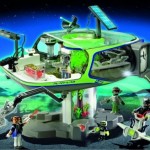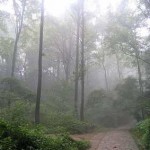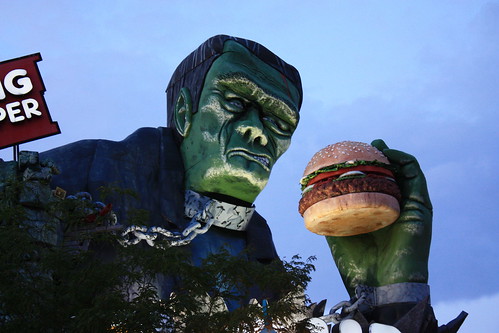It is all about climate change
GLOBAL IDEAS Reporter Manuel Özcerkes is filming in Uganda for his new report on climate education. Here he will meet the singer Angella Katatumba and a few more of the British Council Climate Champions.
In Uganda a lot of people are talking about climate change, there are campaigns to equip the people with knowledge. Even in school climate change is a major topic. But sometimes climate change is responsible for things I would never expect. The student in the clip explains that there is a flood in the UK and a man with his bicycle would eventually die in the water. And suddenly she shows the picture of a sad lady in Germany. She is not happy about the snow that is caused by the climate change. That lady with the sad face is the German Chancellor Angela Merkel. 30 Minutes later I asked her if she knows who that sad lady was? She did not. She just did researches in the Internet. Well, sometimes the world wide web is not the right source for researches about the effect of the global warming or the reason why Angela Merkel seem to be so sad, I guess.
Rice and Sun = Electricity
Earlier this year reporter Marion Hütter from the Global Ideas team brought us this interesting story about how Cambodia is harnessing the power of the sun and rice husks–yes, rice–to create electricity. That's especially important in a country like Cambodia, where 80 percent of people live in rural parts of the country, outside the national electricity grid.
A company called Kamworks has manufactured "Moonlight" solar lamps that can provide as much as 20 hours of light. And the cost of the lamp is being slashed, from $50 to $25. Another company called SME Renewables is working on new energy solutions in Cambodia, like turning biomass into electricity.
Check out this report–and enjoy!
Eco-friendly Fun
 Kids love toys–there's no doubt about it. And adults do too, of course. But did you know that you can make environmentally-conscious toy decisions too? The Nürnberg Toy Fair has just wrapped up here in Germany, and one of the show's biggest hits was the 'green toys' section. The toys aren't just fun, they make kids aware of energy and where it comes from–and how much of it they use, too. There was everything from a solar-panel fitted space station to hydro-electric powered toy cars and doll houses with wind turbines.
Kids love toys–there's no doubt about it. And adults do too, of course. But did you know that you can make environmentally-conscious toy decisions too? The Nürnberg Toy Fair has just wrapped up here in Germany, and one of the show's biggest hits was the 'green toys' section. The toys aren't just fun, they make kids aware of energy and where it comes from–and how much of it they use, too. There was everything from a solar-panel fitted space station to hydro-electric powered toy cars and doll houses with wind turbines.
One of the finalists for the top green toys was something called Innovative Eco-Power, made by a French company. It's a model car that has 2 aluminum-lined tanks connected to an electrical circuit. When you put salt water in the tanks, the circuit is completed and the car has power. It's a neat way to show children how one form or renewable energy works.
You can check out all the green toy finalists here.
Right now green toys don't play a big role in the international toy market, but experts that could change in the future. In fact, one research firm thinks green toys could account for 5% of toy sales in the U.S. alone in 5 years. So play nice–and play green!
Taking Back the Forest
 Are forests back on the rise? The latest study from the UN Food and Agriculture Organization (FAO) shows the rate of forest loss is actually slowing down, surprisingly enough. That's mainly thanks to a push to plant–rather than cut down–forests in Asia.
Are forests back on the rise? The latest study from the UN Food and Agriculture Organization (FAO) shows the rate of forest loss is actually slowing down, surprisingly enough. That's mainly thanks to a push to plant–rather than cut down–forests in Asia.
According to the State of the World"s Forests 2011 report, the rate at which the planet's forests are being cut down decreased from 8.3 million hectares a year between 1999-2000 to just 5.2 million over the last decade. And, the UN says the world's forest regions could even start expanding in the near future!
China has focused on a big reforestation project, which includes increasing the country's forested land area from 120 million to 200 million hectares. There's just one small problem, according to the FAO: a lot of that new growth will likely be "junk" forestation because it won't have the same carbon storage value as existing forests. Plus, a lot of valuable forest land is still being razed at a very high rate in South America and Africa.
What about in your region? Is your home country planting or cutting down–and have you noticed any changes?
Frankenstein meat to curb climate change?
 Between the emission of methane (which traps more heat than CO2), deforestation for animal feed production, loss of biodiversity due to eutrophication, acidification, pesticides and herbicides as well as land degradation, 'factory farming' (the method through which most of the world's meat is produced) is considered more an earth pollutant than vehicles.
Between the emission of methane (which traps more heat than CO2), deforestation for animal feed production, loss of biodiversity due to eutrophication, acidification, pesticides and herbicides as well as land degradation, 'factory farming' (the method through which most of the world's meat is produced) is considered more an earth pollutant than vehicles.
Scientists at the Medical University of South Carolina are now hoping these environmental concerns will lead to more funding for what they consider the food of the future: lab grown meat. The scientists have taken embryonic cells that develop into muscle tissue from turkey and bathed them in a nutrient bath of bovine serum on a scaffold made of chitosam to grow animal skeletal muscle tissue. In order to make the meat juicy, they are adding a vascular system so that interior cells can receive oxygen. The scientists say this will take the need for feed out of the equation as well as stop the clearing of land for the factory farms.
The scientist in charge of the product plans on calling the resulting food 'charlem' for Charleston engineeered meat. It's a thought that almost makes you want to become vegetarian.
(jhoff)
(Photo by ogondio)








Feedback